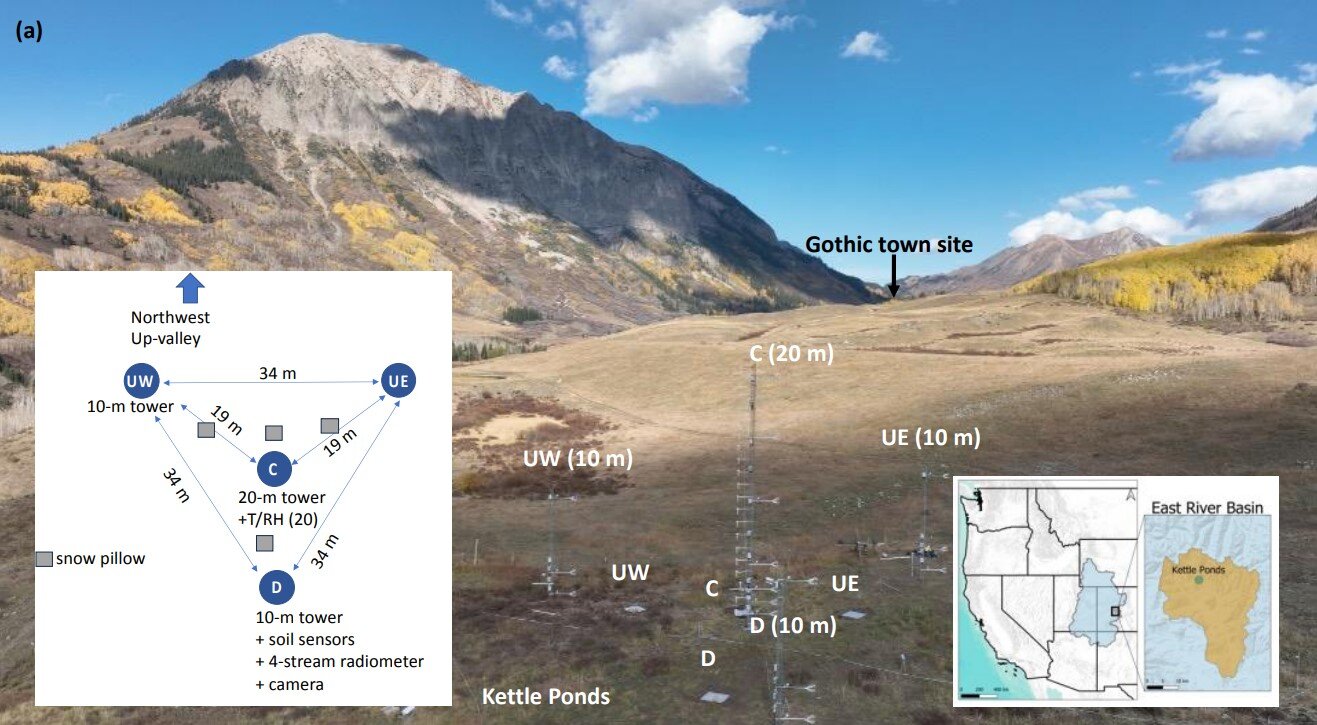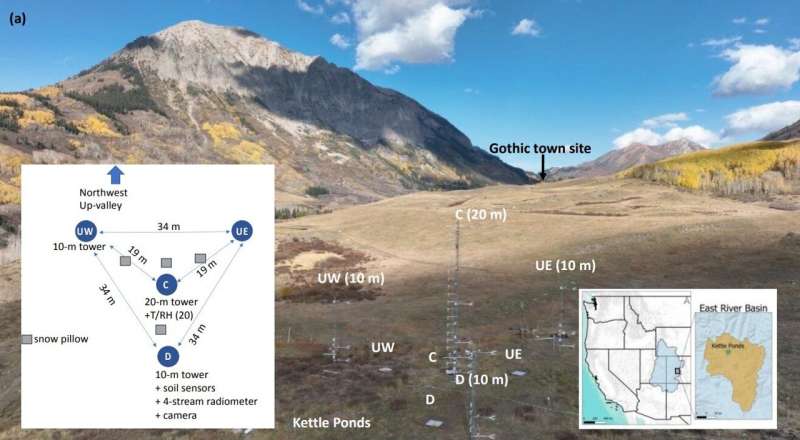

A major field project high in Colorado’s Rocky Mountains has enabled scientists to produce the most comprehensive examination to date of how snow sublimates in a mountain environment.
In a recent study, published in the Bulletin of the American Meteorological Society, scientists have filled longstanding gaps in the poorly understood process of sublimation, which is the process by which snow transforms directly from a solid (snow) to a gas (water vapor). Such information is crucial for water managers who need to decide whether to hold or release reservoir water as the spring runoff begins.
The research was led by Jessica Lundquist at the University of Washington, with co-authors at the University of Washington, Aspen Global Change Institute (AGCI), and the U.S. National Science Foundation National Center for Atmospheric Research (NSF NCAR).
It was based on observations taken during the 2022–2023 Sublimation of Snow Project, in which scientists used a battery of instruments to collect data on wind speed, snowfall, and blowing snow at a site outside Crested Butte, Colorado.
The new research shows that most water loss to sublimation occurs after the release of widely used April 1 runoff forecasts, which are critical for water management decisions. The SOS Project’s extensive instrument array also revealed that the majority of the mid-winter’s sublimation occurs during blowing snow conditions, although most of that snow was redistributed elsewhere and not lost to sublimation. This redistribution affects the timing of melt and the magnitude of late season runoff.
“These findings are really important for our ability to model the amount and timing of runoff for seasonal forecasts and future climate projections,” said NSF NCAR scientist Ethan Gutmann, a co-author of the new study. “If we don’t understand the processes that control historical runoff, we cannot be as confident in our predictions.”
More information:
Jessica D. Lundquist et al, Sublimation of Snow, Bulletin of the American Meteorological Society (2024). DOI: 10.1175/BAMS-D-23-0191.1
Citation:
Scientists make gains in mystery of missing snow (2024, May 31)
retrieved 31 May 2024
from https://phys.org/news/2024-05-scientists-gains-mystery.html
This document is subject to copyright. Apart from any fair dealing for the purpose of private study or research, no
part may be reproduced without the written permission. The content is provided for information purposes only.

